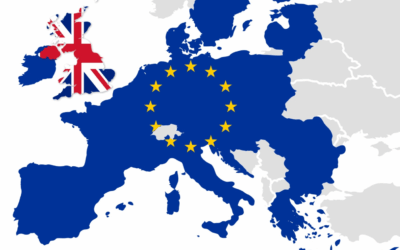A windfall tax is a tax on abnormal profits companies make from unexpected events, like the COVID-19 pandemic or the Russian invasion of Ukraine, rather than from their own decisions. A windfall tax is also described as a tax imposed on exceptional profits or “windfall profits” that are generated by companies due to unplanned events like natural disasters, pandemics, or other unforeseen circumstances, rather than the actions or decisions of the company. The tax aims to redistribute these unexpected profits and is typically imposed during times of crisis.
The EU recently implemented a windfall tax on record profits in the energy sector as an emergency measure. The tax is defined as profit over 20% increase from the average taxable profits since 2018. The tax rate is left to Member States, but must be at least 33%.
What makes windfall profits unique from a transfer pricing perspective?
Governments need to determine which entity in a multinational group will be taxed on the windfall profits. The current practice, following the OECD Transfer Pricing Guidelines, is to allocate profits to the entity that takes strategic decisions and controls risks. However, it’s not clear if this is a correct application of the arm’s length principle and if the profits can be attributed solely to key decision-making. The definition of windfall profits, the rate of tax, and the assets subject to the tax can vary and is often determined by the government or regulatory body imposing the tax. The allocation of windfall profits to a particular jurisdiction and entity within a multinational group can also raise complex transfer pricing issues.
Windfall profits are unexpected and sudden, also explained as profits that are an unexpected increase in profits due to a sudden and temporary event such as a market price increase, natural resources discovery, or favorable government action. They are often considered excessive and unjustified, given the sudden and external nature of the event causing them, as these profits are not a direct result of an investor’s actions or decisions. Economic rents and windfall profits are generated by assets like natural resources. The question of where these profits should be attributed remains open.
Examples of companies that have experienced excessive windfall profits include oil companies during periods of high oil prices, technology companies during the dot-com boom, and pharmaceutical companies with exclusive rights to a popular drug. One example of windfall profit is a sudden increase in profit due to unexpected events such as a natural disaster that disrupts the supply chain of a company’s competitors, leading to a surge in demand for the company’s products and higher prices. Another example is a sudden increase in the price of a valuable resource that a company owns, such as oil or minerals, leading to increased profits.
Apple is a good example. During the rise of the smartphone industry. Apple’s iPhone products saw a surge in sales and market dominance, resulting in significant profits. Another is Amazon, the e-commerce giant, experienced substantial windfall profits during the COVID-19 pandemic due to the increased demand for online shopping as consumers shifted away from traditional brick-and-mortar stores.
On the contrary, a windfall loss is a sudden, unexpected financial loss incurred as a result of unforeseen events, such as natural disasters, market crashes, or other unforeseen circumstances. It can cause significant harm to an individual or a business, as they may not have adequate resources to mitigate the loss or recover from it.
An example of a company that experienced severe windfall losses is BP after the Deepwater Horizon oil spill in the Gulf of Mexico in 2010. The cleanup costs, compensation claims, and legal costs associated with the spill led to billions of dollars in losses for BP, which was considered a windfall loss due to the unexpected and uncontrollable nature of the disaster.
Another example of a company that suffered huge windfall losses is Enron. Enron was an American energy company that declared bankruptcy in 2001 after it was revealed that the company had engaged in widespread accounting fraud and other unethical business practices. The scandal resulted in significant financial losses for shareholders and employees, and several top executives were convicted of crimes related to the fraud. These actions caused its stock price to plummet and resulted in significant losses for shareholders. The collapse of Enron had a significant impact on the energy industry and led to reforms in corporate governance and accounting practices.
In a multinational corporation, it is usually the subsidiary entity that generates the windfall profit that would declare and pay the windfall tax. In the context of transfer pricing, the subsidiary would be considered an independent entity from the parent company, and would be responsible for declaring and paying taxes on its own profits, including windfall profits. The subsidiary’s declaration and payment of windfall taxes would typically be subject to local tax laws and regulations in the jurisdiction where it operates.
It’s important to note that the specific rules regarding the declaration and payment of windfall taxes can vary greatly depending on the jurisdiction, and there may also be international tax treaties that impact the subsidiary’s obligations. Since transfer pricing refers to the practice of determining the price of goods and services traded between different entities of a multinational corporation, for tax purposes, the windfall taxes are typically paid by companies in the jurisdiction where the exceptional profits or windfalls are generated. The tax is meant to distribute some of these benefits to the wider public or community.
For example, if a multinational corporation operates a subsidiary that extracts natural resources and generates a windfall profit, the windfall tax would typically be paid in the country where the subsidiary operates, rather than in the country where the parent company is headquartered. It’s worth noting that the specific rules and regulations regarding windfall taxes can vary greatly depending on the jurisdiction, and there may also be international tax treaties that impact where and how windfall taxes are levied.
To conclude, windfall tax is a tax imposed on companies with sudden, unexpected profits. The proceeds from the tax will be used for financial support and energy security projects. The question for governments is which entity or permanent establishment within a multinational company will accumulate these profits and hence which jurisdiction will be entitled to tax it at a high rate. The determination of the jurisdiction to tax the excess profit may depend on where the key decision-makers are located, as this may influence where the profits are accumulated from a transfer pricing perspective.
An example to illustrate this is of a multinational enterprise that has a natural gas field, facilities, and production located in Norway, but key decision-makers responsible for key decisions such as purchasing additional production equipment and concluding sales agreements are located in Denmark and the UK. The question being posed is which jurisdiction should be entitled to tax the excess profits from this company, from a transfer pricing perspective, in 2023. The two options being considered are Norway, where the gas reserve and facilities are located, or Denmark and the UK, where the key decision-makers are based. The determination of the jurisdiction to tax the excess profits will depend on the transfer pricing rules and regulations, and which jurisdiction the profits are considered to have been accumulated in.
Sources:
https://www.naturalgasworld.com/netherlands-to-raise-3.2-billion-with-windfall-tax-101811
Photo by Sudipta Mondal: https://www.pexels.com/photo/green-plants-on-black-soil-1441460/



